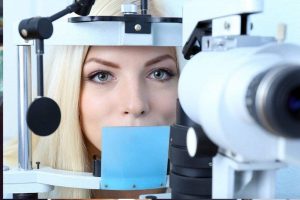Could radiofrequency be the next big thing to treat dry eyes?
Since 2001, radiofrequency has been used as a non-surgical treatment to reduce fine lines and wrinkles on the face, but more recently has become a popular treatment for dry eye syndrome.
What is dry eye syndrome?
Dry eye syndrome affects up to 50% of the population.
Dry eye syndrome (DES) is a common eye condition that occurs when the quantity or quality of the tears is diminished, and the eyes are unable to receive the hydration and nourishment they need to remain moist and healthy.
There are many different factors that can increase your risk of DES, including:
- Genetics
- Age
- Hot, dry or windy climate
- Hormonal changes
- Post-LASIK surgery
- Certain medications or medical conditions
However, around 80% of DES cases are caused by meibomian gland dysfunction (MGD).
What is meibomian gland dysfunction?
The meibomian glands are the tiny glands that line the upper and lower eyelids.
These glands secrete the oil (meibum) for the outer layer of the tear film — the layer responsible for preventing the tears from evaporating too quickly.
Meibomian gland dysfunction (MGD) occurs when these glands become clogged with thick secretions, usually caused by a buildup of debris, eye makeup, blepharitis (inflammation) or a demodex mite infestation.
The blocked meibomian glands impact the normal flow of oil into the tear film and affect the quantity and quality of the tears.
Common symptoms of MGD
A range of symptoms can occur from MGD, including:
- Dry eyes
- Itchy eyes
- Red eyes
- Crusty discharge in the corner of the eyes
- Burning sensation in or around the eyes
- Watery eyes
- Light sensitivity
- Blurred vision
- Chalazion/styes
- The feeling something is stuck in the eyes
SEE RELATED: Why is Dry Eye Worse in the Mornings?
If chronic dry eyes are impacting your life, schedule an eye exam with an eye doctor near you to determine the cause and find out which treatment will work best for you.
What is radiofrequency?
Radiofrequency (RF) is a heat generating technique that stimulates collagen production by safely distributing high frequency electrical currents to the surface of the skin.
An increase in collagen helps to tighten the skin, thereby improving the appearance of fine lines and wrinkles.
How can radiofrequency treatments help dry eye?
While radiofrequency (RF) is widely known for its ability to reduce the appearance of fine lines and wrinkles, it is now being used by optometrists to help treat dry eyes.
When RF is applied to the skin adjacent the eyes, the heat from the treatment melts the thick oil secretions blocking the meibomian glands, facilitating easier gland expression and improved oil flow.
The RF treatment also stimulates collagen production in the deeper layers of the skin around the eye, helping to reduce inflammation that may be contributing to MGD.
What to expect during your treatment?
The RF treatment is a non-invasive, in-office procedure that typically takes around 10 to 20 minutes to complete.
The RF treatment does not cause pain or discomfort. During your treatment, your eye doctor will gently massage your upper eyelid and the skin beneath your lower eyelid using the RF tool and a soothing gel.
Following your treatment, you may notice some redness and mild swelling around your eyes, but this should subside within a few hours. Your eye doctor may recommend moisturizing the area and avoiding exposure to heat for a couple of hours.
Optimal results are generally noticed after 3 to 4 treatments, which may be spaced over 2 to 4 weeks.
LEARN MORE: What Is Dry Eye Syndrome
If you or a loved one is suffering from chronic dry eyes, schedule an eye exam with an eye doctor near you to determine whether MGD is causing your symptoms and learn more about the optimum treatments.
Radiofrequency has been used in dermatology to gently reduce fine lines and wrinkles on the face, but could devices be the next solution to eliminate the impact dry eyes have on our lives?








